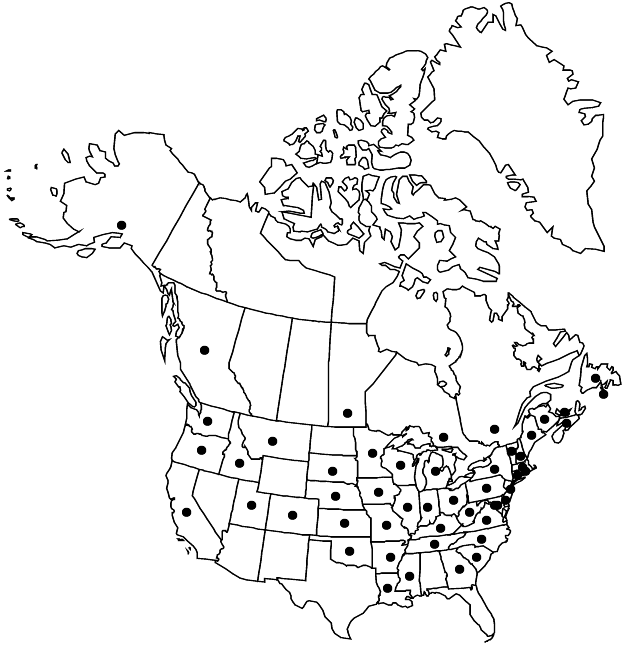Show Lower Taxa
Difference between revisions of "Fallopia japonica"
Bot. J. Linn. Soc. 98: 369. 1988.
Common names: Japanese knotweed
Basionym: Reynoutria japonica Houttuyn
FNA>Volume Importer |
FNA>Volume Importer |
||
| Line 25: | Line 25: | ||
|distribution=Asia;introduced in Europe. | |distribution=Asia;introduced in Europe. | ||
|discussion=<p>Varieties 4 (1 in the flora).</p><!-- | |discussion=<p>Varieties 4 (1 in the flora).</p><!-- | ||
| − | --><p>Fallopia japonica is planted widely as a garden ornamental; it has a proclivity to escape and spread aggressively. Once established, plants can be difficult to eradicate because of their extensive, woody rhizomes. The species has been declared noxious in Alabama, California, Oregon, Vermont, and Washington.</p> | + | --><p><i>Fallopia japonica</i> is planted widely as a garden ornamental; it has a proclivity to escape and spread aggressively. Once established, plants can be difficult to eradicate because of their extensive, woody rhizomes. The species has been declared noxious in Alabama, California, Oregon, Vermont, and Washington.</p> |
|tables= | |tables= | ||
|references={{Treatment/Reference | |references={{Treatment/Reference | ||
| Line 50: | Line 50: | ||
|publication year=1988 | |publication year=1988 | ||
|special status= | |special status= | ||
| − | |source xml=https://jpend@bitbucket.org/aafc-mbb/fna-data-curation.git/src/ | + | |source xml=https://jpend@bitbucket.org/aafc-mbb/fna-data-curation.git/src/8f726806613d60c220dc4493de13607dd3150896/coarse_grained_fna_xml/V5/V5_1110.xml |
|subfamily=Polygonaceae subfam. Polygonoideae | |subfamily=Polygonaceae subfam. Polygonoideae | ||
|genus=Fallopia | |genus=Fallopia | ||
Revision as of 18:36, 18 September 2019
Distribution

Asia, introduced in Europe.
Discussion
Varieties 4 (1 in the flora).
Fallopia japonica is planted widely as a garden ornamental; it has a proclivity to escape and spread aggressively. Once established, plants can be difficult to eradicate because of their extensive, woody rhizomes. The species has been declared noxious in Alabama, California, Oregon, Vermont, and Washington.